What is History Now? How the Past and Present Speak to Each Other
Mention the historian E H Carr to a client of a professional historian, and it is a fair bet that the name will arouse suspicion. The apparent Soviet over-sympathies of the proclaimed ‘relativist’ historiographer in What is History? (1961) were actually an attempt at historical objectivity during the Cold War. So said the great-granddaughter of the lustrous historian, the lead editor in this informative collection of essays connecting the past and present in what we understand as ‘history’.
READ REVIEW
↓
What is History Now?
How the Past and Present Speak to Each Other
Helen Carr and Suzannah Lipscomb | 2021
The famous historiographer E H Carr never knew his great-granddaughter. In that regard Helen Carr’s foreword and prologue speaks to one area missing in this collection – personal history. There is no reference to the Carr family in Emily Brand’s essay, ‘Why family history matters’ and Helen Carr’s own essay, titled ‘Can our emotion have a history?’ would have been a great opportunity to provide clarity about the historiographer and his work. Nevertheless, for a book that is supposed to take our understanding of E H Carr to the next level, the socio-political connections to the personal understanding of the history are not there. It is not that sociology and political thinking do not appear in the collection; the topics of empire, disability, Indigenous people, and East Asia’s past are well covered.
Unfortunately, the genre of literary history swims through the collection of past and present. In the persistent debate between history and fiction, there is a lack of understanding of how literature and cultural references work intellectually (clearly knowing the ideas and concepts). There is certainly a value in the histories of literature (such as Islam Issa’s essay) and of movies (Alex von Tunzelmann’s essay). However, the defence of film and novel portraying the past keeps missing the mark. The lust for entertaining drama distorts the understanding of true (accurate) historical drama. A historiographer like E H Carr appreciated the difference. The relativity in history does mean an educative simplification, which drives technical specialists to the place of Albert Camus’ 1942 novel The Stranger – are serious historians members of this ‘world’? Perhaps. Inaccurate impressions will always be part of the legitimate history storytelling, but I am not as optimistic as Helen Carr, that storytelling will be a popular pathway to the craft of history making. Serious historians are on the road less travelled.
As Simon Schama, a thorough and yet popular historian, demonstrates in another essay in this collection, better historical writing provides better integration. Schama has an ability to provide the flow of the story without dropping the concepts, and, in Schama’s case, natural histories and seeing history naturally. His is not the only more heavyweight essay. I was pleasantly surprised by Miri Rubin’s ‘How do we write the history of religion?’ Rubin walks through not only the direct historical concepts for the sub-field, but also those of anthropology and sociology, and of cultural and political studies. Too many professional historians lack that wider view.
I was born in 1961 – the year of E H Carr’s famous lecture series that became What is History? Like Helen Carr, my great-grandfather had passed years before I was born. The point is that, like the present, we are mistaken to think we really know persons of the long past and their thinking. We can only obtain fair impressions from intellectual histories. Each essay concludes with a useful list for further reading. It is a call for wider, multidisciplinary reading in professional work.
Reviewer: Neville Buch, PHA (QLD)
What is History Now? How the Past and Present Speak to Each Other is published by Weidenfeld & Nicolson.

